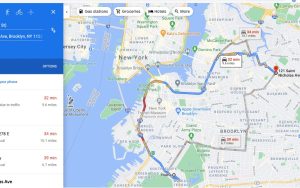It all seemed so very hopeful when the cable channels were breathlessly reporting on the initial shipments of the Pfizer vaccine in the middle of December. Remember the reports of the big UPS and FedEx trucks pulling away from the Pfizer manufacturing plant. In the days before, the same channels had reported on the elaborate practice runs that the facilities were going through to make sure that nothing went wrong with the preservation of the vaccines in the extra-cold environments needed to maintain their effectiveness.
It may well be that the development of the COVID vaccines will come to rank in the first tier of breakthrough medical triumphs—along with the smallpox vaccine, penicillin, the treatment of TB and the polio vaccines. But, while outstanding scientific achievements remain possible, the full use of those accomplishments for the betterment of human lives appears to be increasingly uncertain.
There was another round of celebrations on the days of the first vaccinations—typically in hospitals with smiling and cheering doctors and nurses showing the way. A nurse in New York was at the head of the line.
All too soon, the celebrations ended and the commiserations began. Once they began vaccinating people outside the very controlled environments of large hospitals, difficulties and delays became commonplace. Worse still, in a replay of the situation with testing and the provision of essential supplies and equipment last year, there was general confusion and a refusal on the part of any public officials to take responsibility for what was going wrong.
We should not be surprised that things went wrong. Alongside the medical wizardry in the execution of almost unimaginable surgeries, there is the enduring shame of infections that patients acquire while they’re in a hospital. The CDC (Centers for Disease Control and Prevention) estimates that these account for an estimated 1.7 million infections and 99,000 associated deaths each year.
In spite of clear evidence to the contrary, the common message of politicians seemed to be that they were doing the best they could and it’s not possible to do any better. They don’t seem to have learned anything from previous moments where it was indeed possible to do much better. In 1947, in the face of a possible smallpox outbreak, New York City managed to vaccinate six million people in a month. Today, after more than a month since the start of vaccinations, the total number of vaccinations in the city is below the target of one million that the mayor, Bill de Blasio, had trumpeted as a very ambitious goal. I guess he didn’t know about 1947. The fact of the matter is that he doesn’t seem to know much about anything. Some time ago, a high-ranking political insider was asked what he thought about the state of politics in the city and he responded: “What do you think is going to happen when the situation is being decided by a fight between a moron and a psychopath?” I’m confident that the “moron” was the mayor and the “psychopath” was the governor.
To be fair, one reason why the city fell short of its goal was that it didn’t receive as many doses as it had expected. If I understand the current situation correctly, the city has thus far received about one and a half million doses and, as of yesterday, only had about 100,000 left. In 1947, there were supply problems but they were much more manageable because the smallpox vaccine had already been developed and the city was able to get doses from elsewhere. The threatened outbreak was localized in NYC—hell was not breaking out all over the place.
But, separate and apart from the supply issues, it’s the way that the vaccinations have been scheduled that’s driving people crazy. Perhaps the root of the problem is that the responsibility for vaccine administration is shared between the city and the state. Each entity came up with its own system of setting up vaccination sites and scheduling people. Of course, most people had no idea which system they were trying to get into. They just went to one or another web page (of which there were many) and started searching for vaccination sites and available appointment dates. Or they called a vaccination hotline and got put on hold. At the end of either kind of effort, the outcome was often enough the same—there are no appointments available or the earliest appointment available is in March.
Compounding the problem was a constantly changing definition of priority populations—first, health care workers and nursing home residents and workers; then first responders; then people over 75; then school teachers; then people over 65. All told, there are more than seven million people in New York State in one or another of the priority categories—which, for all practical purposes, means that there are no priorities.
But there is lots of chaos. A few stories capture it. The city decided to open a mass vaccination site at the Javits Convention Center on the far west side of Manhattan. On the first day of its operation, an elderly man’s daughter wheels him into the Center in his wheel chair. The security guard asks: “”Who’s being vaccinated?” The woman points to her father. The guard responds: “And how about you? We can get you a shot too.” Not quite believing what she heard, she still said yes.
On January 15th, NYS announced that it was opening up eligibility to people 65 and older; it had previously been 75 and older. Our daughter and son-in-law got right on the case and, within an hour, got us appointments for January 22nd. But on January 20th, we were notified that our appointments had been postponed to the 29th—because the site we were scheduled for, a city hub, had run out of vaccines.
On the 22nd, a good friend of my wife was called by a small pharmacy in Bushwick (a neighborhood on the far north side of Brooklyn) to tell her that she could be scheduled for a vaccine; she went, got the vaccine and later told my wife who then called the pharmacy. They told her that if we could get there by 7:30 PM, we too could get the shots. We drove as fast as we could on the Brooklyn Queens Expressway and on a zigzag pattern of local streets in Greenpoint and Bushwick. Here’s the map.
 Our Vaccine Journey
Our Vaccine Journey
We got there by about 6:30. The pharmacy was a brightly lit corner storefront in an out of the way residential neighborhood, all but completely dominated by the remainders of Brooklyn’s industrial past.
I was dreading a re-run of my experience some months ago when my COVID test was lost. But no, after just a few minutes of filling out a form and copying our IDs and insurance cards, our sleeves were rolled up and we were punctured. We sat for fifteen minutes to make sure that we didn’t have any adverse reactions. After those fifteen minutes, we were good to go. Then we got to drive through the darkened streets of Brooklyn to get home. I’ll spare you the map of our return journey.
On that same day, my sister (who’s a retired school teacher) learned by way of the daughter of a friend that there was a special web page for city workers to get appointments. She logged on pretty easily and got an appointment for January 25th at a high school in another Brooklyn neighborhood. When she went, she met no lines, no run-arounds, just in and out—in her case, the in and out was twenty minutes.
It appears that one source of the confusion is the impact of refusals of individuals to get vaccinated or simply not turning up for an appointment. This is an instance where it would have taken real thoughtfulness and careful monitoring. For example, in the case of nursing homes, it appears that initially many staff members declined to be vaccinated but over time, especially after conversations with co-workers, many signed up for vaccines during a second round. Understanding that kind of changing reality is hard to get right; perhaps the best you can do is to know in advance that it might happen and plan for different eventualities. It will all but never happen when political leaders pretend that they know better than everyone else what to do.
So far as I can tell, the city and state did not really begin planning for vaccinations for real until just before the first vaccines were released. Which means that they really didn’t plan at all. You would have thought that they might have learned something from how badly they handled the early days of the epidemic and tried to methodically think through policies and practices and do lots of trial runs with different scenarios that would present different challenges. For example, what would they do if they had unused vaccines at the end of the usability period? How would they determine who should be contacted? How would they contact them?
Beyond all the politically induced stupidities, there are some miserable realities—there is an all but completely inadequate public health infra-structure (including equipment, supplies and well-trained staff) just about everywhere in the US. That was not always the case. There is a good reason why mass vaccinations worked in 1947 and not in 2020-21. What we’re left with now and what we have gotten used to is a bare minimum—we still expect fire departments to be ready to respond before the fire alarms sound. But not so with public health! Just take a minute and imagine how much better all of the epidemic could have been handled if there was the equivalent of fire departments for public health.
A couple of weeks ago, I wrote to a friend in Paris and told him that the vaccine situation here in the States was a mess. He wrote back:
With the vaccine the mess is the same here. The private companies are saying they will produce fewer doses so we need to wait… The State everywhere is falling apart, except for the repressive tasks. They privatized everything so now they are unable to organize even a vaccine campaign. We enter into a new era of social decomposition. Extraordinary times!
I wrote to him again and asked him to say a bit more about “social decomposition.” He had some interesting things to say:
In America, … the root of democracy is the belief that America is a country where the capitalist system can open opportunities to everyone. This idea seems more and more broken today; the present phase of capitalism limits the realization of this idea in the lives of working people and young people. Important parts of society have the impression that this is not possible anymore, that only a minority profits from the system. Every sector tries to defend its own limited rights and preserve what they have, or what they think they have. The idea of a general interest — a belief that American capitalism offers a chance for everyone —tends to become less and less possible.
Even a more or less disastrous epidemic has not been able to resuscitate that American dream. Each day that goes by suggests that we are living in an American nightmare. We’re not alone in the nightmare but our experience is somewhat uniquely our own.
***

